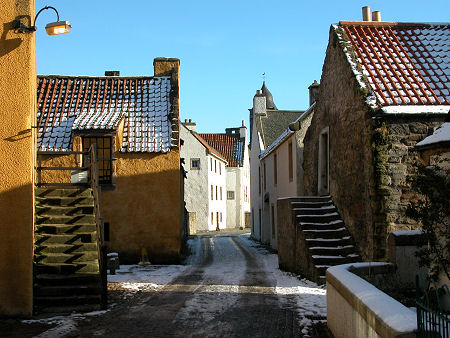 Culross in Fife |
Saint Serf lived from about 490 to 550. He was a Saint who was particularly active in the Culross area of Fife. The wider picture in Scotland at the time is set out in our Historical Timeline.
According to legend, Serf was the second son of Eliud, King of Canaan, and his wife Alphia, daughter of a King of Arabia. As a young man Serf went to Rome, where his holiness was so obvious he was elected pope, a post he filled for seven years. He then travelled across Europe, eventually finding himself in what is now Scotland. Here he established a religious community, on St Serf's Inch, an island in Loch Lomond. From here he seems to have moved east, establishing a church at Dunning (and, according to legend, slaying a dragon that was terrorising the residents) before settling at Culross in Fife, where he funded another religious community. Many of the tales of St Serf owe more to legend that fact, and even the dates for his birth and death are assumptions, based on the least flimsy thing we think we know about Serf, that he was in charge of a religious community at Culross in 528.
Because, according to other legends, it was in 528 that a coracle came ashore at Culross. Its only passenger was Princess Theneva (later St Theneva), who was heavily pregnant. Her father, King Loth of the Gododdin, who ruled from Traprain Law, responded to her pregnancy by first trying to kill her, then casting her adrift in a coracle. On arrival at Culross, Princess Theneva gave birth to a boy. St Serf took in both mother and son and then oversaw the boy's upbringing. The boy went on to become Saint Mungo, also known as Saint Kentigern.
Pretty much all the other assumptions about St Serf have to be worked forwards and backwards from this one encounter, the date of which is probably less than established historical fact anyway. It is fair to point out that another legend suggests that Serf met Adomnán, Abbot of Iona, when he first arrived in Scotland. This would cause problems with other aspects of the story as Adomnán is known to have lived from 627 (or 628) to 704. St Serf is said to have died at Dunning before being buried at Culross.
